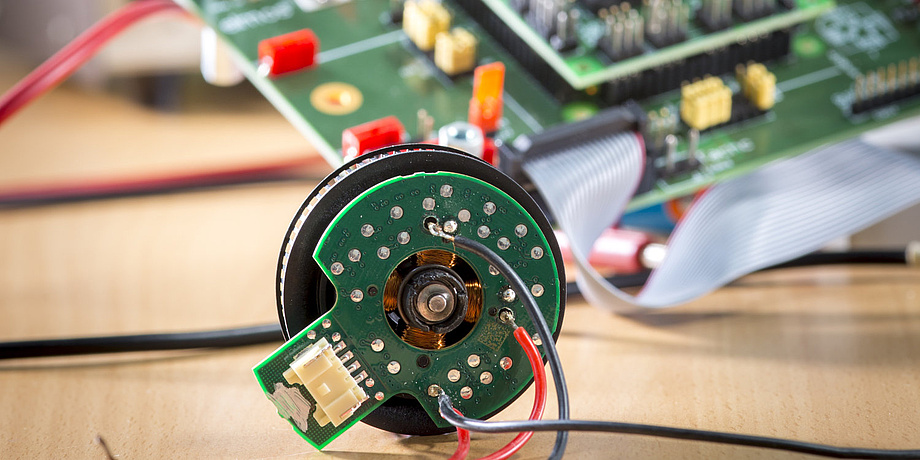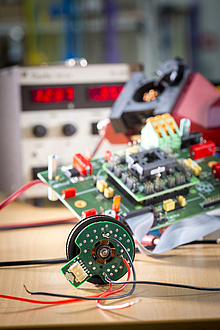Small electric motors can be found in many household appliances, tools and computers as well as in modern cars, where they drive auxiliary units such as pumps and fans. Individually, each of these motors does not consume much energy, but taken together they offer a great savings potential. The research team of the recently completed “CD Laboratory for Brushless Drives for Pump and Fan Applications”, headed by Annette Mütze from the Electric Drives and Power Electronic Systems Institute at Graz University of Technology (TU Graz), has now further tapped into this potential. Thanks to innovative design, modified control technology and the use of new manufacturing techniques, the brushless integrated drives developed here consume less energy, operate more quietly and are lighter.
Slanted claws reduce vibrations
Larger claw pole motors are used in vehicle lighting systems, for example. Their use as small drive units is less well known. Annette Mütze’s team has reduced the so-called “cogging torques” of these small drives by skewing and slotting the claws, which does not incur any additional costs. This minimises the momentary engagement of the claws when the motor is turned, thus reducing unwanted vibrations. “This enabled us to reduce an important source of noise by 70 per cent. This means that the drives run much more smoothly and quietly,” says Annette Mütze.
Simplified control reduces switching losses
Efficiency gains are achieved through simplified regulation of the current flow. Pulse width modulation usually regulates the current with which the motor of a fan or pump is supplied. In order for the current to flow in the desired rectangular pattern, a large number of switching operations are required, which, however, cause additional energy consumption. “We only switch our drives on and off once per desired rectangle,” says Annette Mütze. “This enabled us to considerably reduce the additional energy consumption caused by switching losses.” Particularly at low currents, these drives therefore have a much better overall efficiency than those that are controlled via conventional pulse width modulation. Due to the drastically reduced number of switching operations, the circuit boards of the motors also require half as many capacitors, which reduces costs.
3D printing of ferrite-based material
The third innovation is the implementation of PCB motors with ferrite cores. “PCB” stands for “printed circuit board” and, in the case of motors, means that the windings that generate the magnetic field required for the drive are designed as printed circuit boards. This allows a high degree of automation in production. Annette Mütze’s team equipped the circuit boards with 3D-printed ferrite cores, which improved the guidance of the magnetic flux in the motors. This was the prerequisite for the use of more cost-effective magnets, which are also based on ferrite.
MSG Mechatronic Systems GmbH was involved as a corporate partner in the “CD Laboratory for Brushless Drives for Pump and Fan Applications”.
This research is anchored in the Field of Expertise "Mobility & Production", one of five strategic foci of TU Graz.
Would you like to receive the latest stories, news, research stories, interviews or blog posts from TU Graz directly on your smartphone or in your email inbox? Subscribe to the TU Graz Telegram newsletter free of charge.



